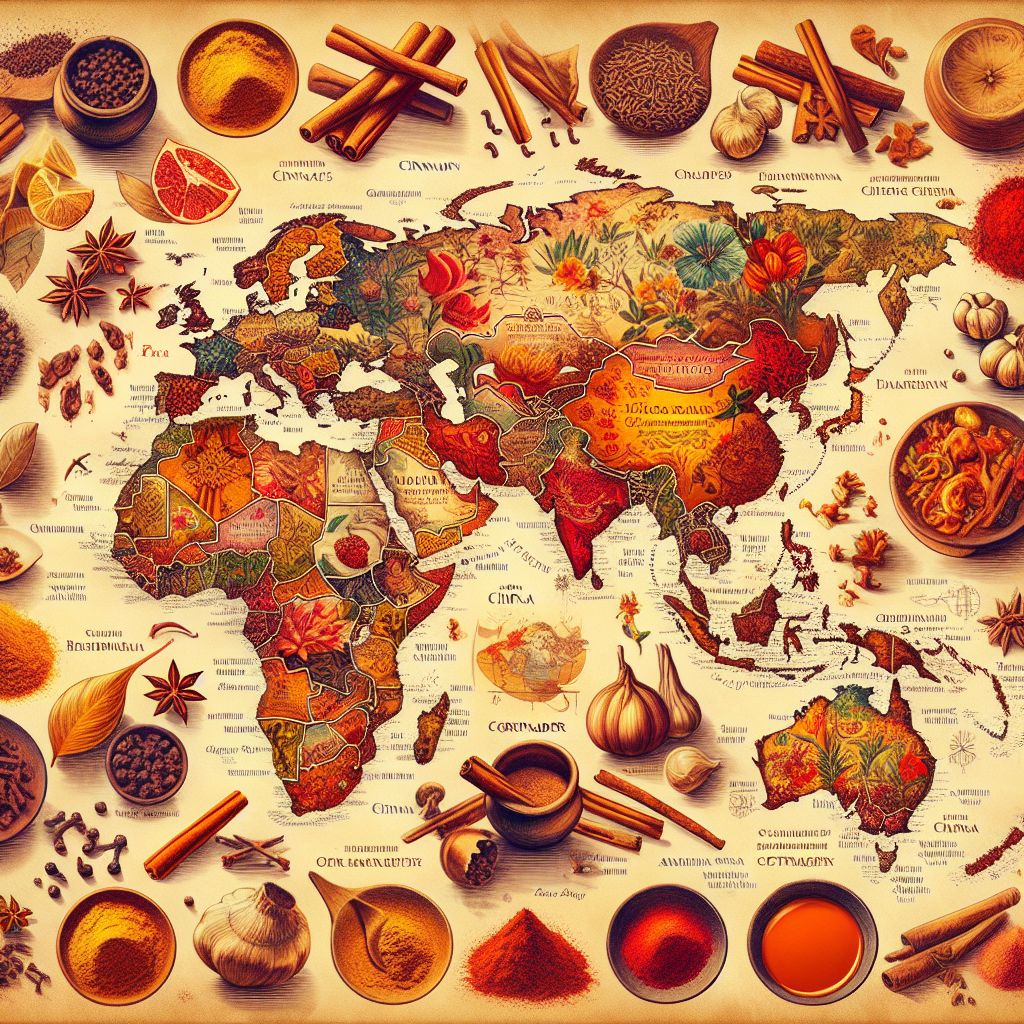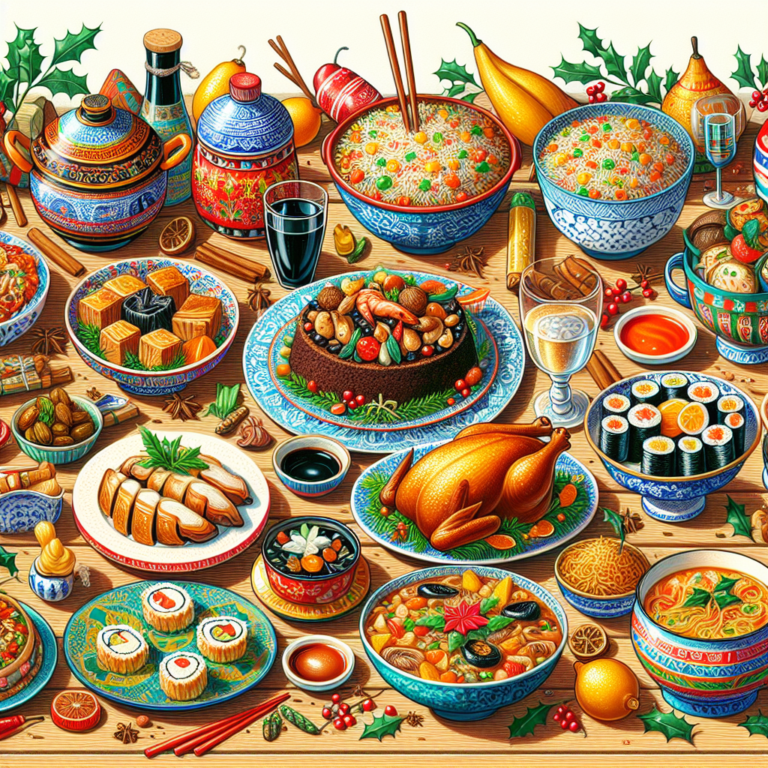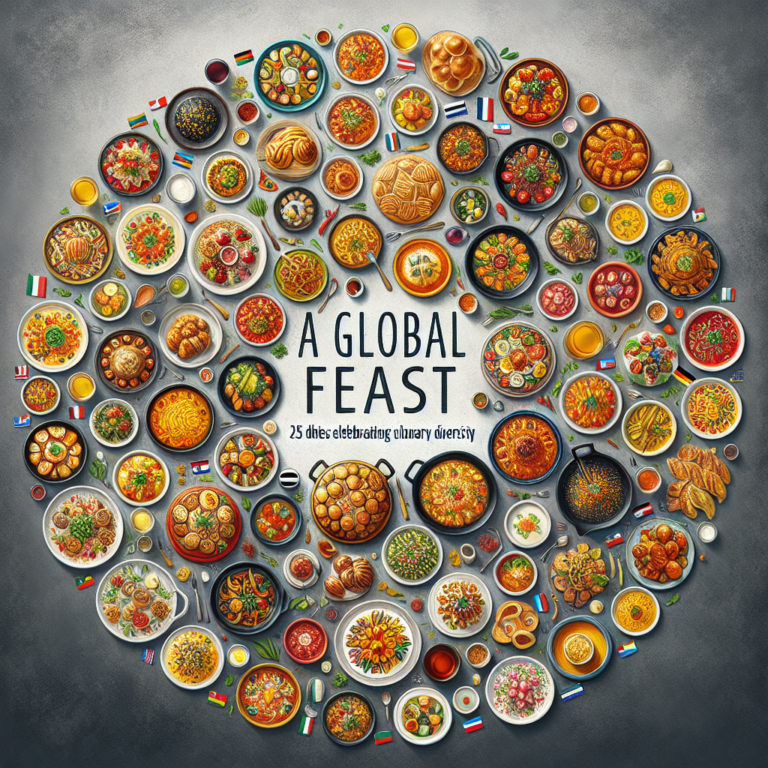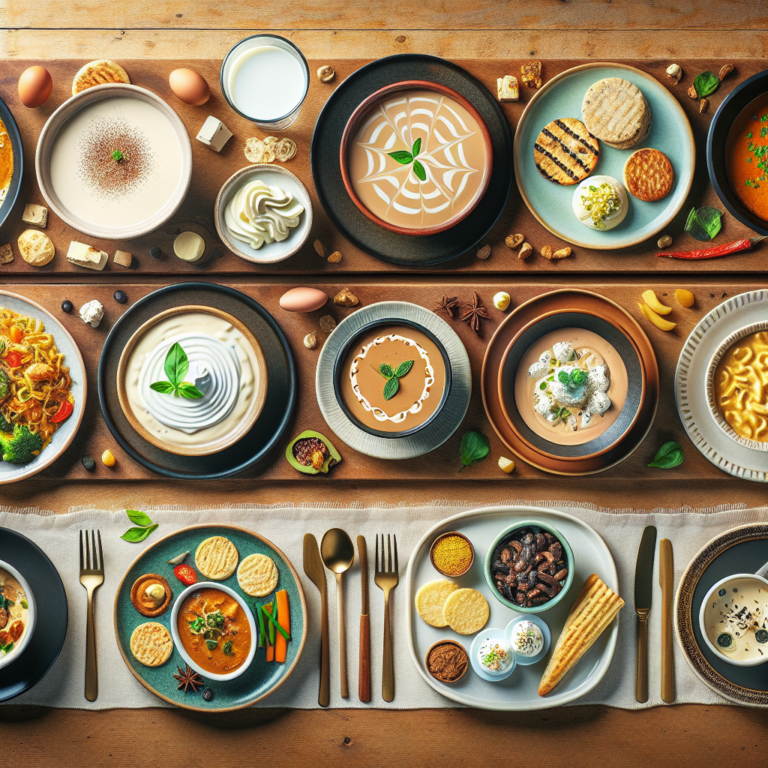
Asia, the world’s largest continent, is known for its rich tapestry of cultures, traditions, and flavors. At the heart of many Asian cuisines is the use of spices, which not only enhance the flavor of dishes but also provide aromatic experiences and health benefits. The Spice Route, a historic trade network, played a crucial role in introducing various spices to different parts of the world. In this article, we will explore fifteen exotic recipes from Asia that showcase the diverse and vibrant flavors of the region.
1. Thai Green Curry
Ingredients:
- 400g chicken, sliced
- 1 can coconut milk
- 2-3 tablespoons green curry paste
- 1 cup eggplant, diced
- 1 bell pepper, sliced
- 1 tablespoon fish sauce
- Fresh basil leaves for garnish
- Jasmine rice for serving
Instructions:
1. In a large pot, heat the coconut milk over medium heat until it starts to simmer.
2. Stir in the green curry paste and cook for a few minutes until fragrant.
3. Add the chicken slices and cook until browned and cooked through.
4. Add the eggplant, bell pepper, and fish sauce. Simmer until the vegetables are tender.
5. Serve with jasmine rice and garnish with fresh basil leaves.
2. Indian Butter Chicken
Ingredients:
- 500g chicken, cubed
- 3 tablespoons butter
- 1 onion, finely chopped
- 2 cloves garlic, minced
- 1 tablespoon ginger, grated
- 1 can tomato puree
- 1 cup heavy cream
- 2 teaspoons garam masala
- Salt to taste
- Fresh cilantro for garnish
- Naan bread for serving
Instructions:
1. In a large skillet, melt the butter over medium heat and add the onions. Cook until soft.
2. Add the garlic and ginger, cooking for an additional minute.
3. Stir in the chicken and cook until browned.
4. Add the tomato puree, garam masala, and salt. Simmer for 15 minutes.
5. Stir in the heavy cream and simmer for another 5 minutes. Serve with naan and garnish with cilantro.
3. Japanese Ramen
Ingredients:
- 200g ramen noodles
- 4 cups chicken or vegetable broth
- 2 tablespoons soy sauce
- 1 tablespoon miso paste
- 1 egg, soft-boiled
- Green onions for garnish
- Nori seaweed for garnish
- Veggies (mushrooms, spinach, bamboo shoots)
Instructions:
1. Cook the ramen noodles according to packet instructions.
2. In a pot, combine broth, soy sauce, and miso paste. Bring to a simmer.
3. Add any additional vegetables and cook until tender.
4. Serve the noodles in bowls, ladle the soup over, and top with soft-boiled egg, green onions, and nori.
4. Korean Bibimbap
Ingredients:
- 2 cups cooked rice
- 1 cup assorted sautéed vegetables (spinach, carrots, zucchini)
- 1 egg, fried
- 2 tablespoons gochujang (Korean chili paste)
- Sesame oil for drizzling
- Sesame seeds for garnish
Instructions:
1. In a bowl, place a serving of cooked rice at the bottom.
2. Arrange the sautéed vegetables on top.
3. Add the fried egg and drizzle with sesame oil.
4. Serve with a side of gochujang and sprinkle sesame seeds to finish.
5. Vietnamese Pho
Ingredients:
- 200g rice noodles
- 1 liter beef stock
- 1 onion, sliced
- 3-4 star anise
- 1 piece of ginger, sliced
- Beef slices (thinly cut)
- Basil, lime, and bean sprouts for garnish
Instructions:
1. In a pot, bring beef stock to a boil and add onion, star anise, and ginger. Simmer for 30 minutes.
2. Cook rice noodles according to package instructions.
3. Strain the broth and return it to the pot. Add raw beef slices and cook until tender.
4. Serve over noodles and garnish with basil, lime juice, and bean sprouts.
6. Indonesian Nasi Goreng
Ingredients:
- 2 cups cooked rice
- 2 tablespoons soy sauce
- 1 tablespoon sweet soy sauce
- 2 eggs, beaten
- 1 cup mixed vegetables (carrots, peas)
- Green onions for garnish
Instructions:
1. In a large pan, heat some oil and scramble the eggs until cooked. Set aside.
2. In the same pan, add the mixed vegetables and stir-fry for a few minutes.
3. Add the cooked rice, soy sauce, and sweet soy sauce. Stir until well combined.
4. Add the scrambled eggs back in and mix. Garnish with green onions before serving.
7. Malaysian Satay
Ingredients:
- 500g chicken, cut into cubes
- 2 tablespoons peanut butter
- 1 tablespoon soy sauce
- 1 teaspoon turmeric powder
- Wooden skewers
- Cucumber and onion for serving
Instructions:
1. In a bowl, mix peanut butter, soy sauce, turmeric, and chicken. Marinate for at least 30 minutes.
2. Thread chicken onto skewers and grill until cooked through.
3. Serve with cucumber and onion as sides.
8. Filipino Adobo
Ingredients:
- 500g pork or chicken, cut into pieces
- 1/2 cup soy sauce
- 1/4 cup vinegar
- 2 cloves garlic, minced
- 1 bay leaf
- Black pepper to taste
Instructions:
1. In a bowl, combine soy sauce, vinegar, garlic, bay leaf, and black pepper.
2. Add meat and marinate for about 30 minutes.
3. In a pot, cook the marinated meat until tender.
4. Serve with rice.
9. Chinese Dumplings
Ingredients:
- 200g ground pork or chicken
- 1 cup chopped cabbage
- 1 tablespoon soy sauce
- 1 teaspoon ginger, grated
- Dumpling wrappers
Instructions:
1. In a bowl, mix the meat, cabbage, soy sauce, and ginger.
2. Place a small amount of filling in the center of each wrapper.
3. Fold and seal the edges. Boil or steam until cooked through.
4. Serve with soy sauce for dipping.
10. Thai Mango Sticky Rice
Ingredients:
- 1 cup sticky rice
- 1 can coconut milk
- 2 tablespoons sugar
- 1 ripe mango, sliced
- Sesame seeds for garnish
Instructions:
1. Soak sticky rice for a few hours and then steam until cooked.
2. In a saucepan, heat coconut milk and mix in sugar until dissolved.
3. Serve sticky rice topped with coconut sauce and mango slices. Garnish with sesame seeds.
11. Sri Lankan Coconut Roti
Ingredients:
- 2 cups flour
- 1 cup grated coconut
- 1/2 teaspoon salt
- Water as needed
Instructions:
1. In a bowl, combine flour, grated coconut, and salt.
2. Add water gradually and knead to form a dough.
3. Roll into flat rounds and cook on a hot pan until golden brown on both sides.
4. Serve as a side with curries.
12. Cambodian Amok Fish
Ingredients:
- 300g fish fillets, cut into pieces
- 1 can coconut milk
- 2 tablespoons red curry paste
- 1 tablespoon lime juice
- Banana leaves for wrapping
Instructions:
1. Mix coconut milk with curry paste and lime juice in a bowl.
2. Add fish pieces and marinate for at least 30 minutes.
3. Wrap the mixture in banana leaves and steam for 30 minutes.
4. Unwrap and serve with rice.
13. Burmese Mohinga
Ingredients:
- 200g rice noodles
- 1 liter fish stock
- 1 onion, chopped
- 2 cloves garlic, minced
- 1 tablespoon curry powder
- Chopped cilantro and lime for garnish
Instructions:
1. In a pot, sauté garlic and onion until soft.
2. Add fish stock and curry powder, bringing to a simmer.
3. Cook rice noodles according to package instructions.
4. Serve the noodles with the soup and garnish with cilantro and lime.
14. Laos Papaya Salad (Tam Mak Hoong)
Ingredients:
- 1 green papaya, grated
- 2 tomatoes, chopped
- 2 cloves garlic, minced
- 1-2 chilies, chopped
- 2 tablespoons fish sauce
- 1 tablespoon lime juice
Instructions:
1. In a large bowl, combine grated papaya, tomatoes, garlic, and chilies.
2. Add fish sauce and lime juice, tossing everything together.
3. Serve fresh as a salad.
15. Indian Chole Bhature
Ingredients:
- 1 cup chickpeas, soaked overnight
- 1 onion, chopped
- 2 tomatoes, pureed
- 2 teaspoons chole masala
- 2 cups flour (for bhature)
- 1/2 cup yogurt
Instructions:
1. Cook soaked chickpeas until tender. In a pan, sauté onions, add tomatoes and spices.
2. Mix in the chickpeas and cook until thickened.
3. For bhature, knead flour and yogurt into a dough and roll into flat circles. Fry until golden.
4. Serve chole with bhature.
Conclusion
The Spice Route not only influenced the culinary practices of various cultures but also fostered the exchange of flavors, techniques, and traditions that continue to thrive today. The fifteen exotic recipes showcased above represent a small fraction of the diverse and rich culinary landscape found across Asia. Whether you are indulging in the aromatic spices of Indian cuisine or savoring the delicate flavors of Japanese dishes, the Spice Route continues to inspire food lovers worldwide. Each recipe invites you to take a journey through history where flavors travel as far as the imagination allows. So, gather your ingredients, get creative in the kitchen, and embark on your culinary adventure through Asia’s spice-laden offerings.
FAQs
1. What is the Spice Route?
The Spice Route was a historic network of trade routes that connected Asia with Europe, facilitating the exchange of spices, silk, and other goods. It played a significant role in culinary history and the spread of flavors.
2. Why are spices important in Asian cuisine?
Spices are essential in Asian cuisine for flavor enhancement, aromatic qualities, and health benefits. They are often used to create complex flavors that define each region’s culinary identity.
3. Can I substitute ingredients in these recipes?
Yes, you can substitute certain ingredients based on availability or dietary preferences. However, be aware that substitutions may alter the flavor or texture of the dish.
4. Are these recipes suitable for beginners?
Many of the recipes are beginner-friendly, but some may require more advanced cooking techniques. Each recipe contains clear instructions to help you through the process.
5. How can I best store leftover dishes?
Most of these dishes can be stored in airtight containers in the refrigerator for a few days. Some, like curries and stews, may taste even better the following day as the flavors meld. Always ensure to reheat thoroughly before serving.
It seems like you may have intended to provide a specific prompt for me to respond to or elaborate on. Please share what you have in mind, and I’ll be happy to assist!, #Spice #Route #Exotic #Recipes #Asia, #Spice #Route #Exotic #Recipes #Asia, 1736075490, the-spice-route-15-exotic-recipes-from-asia








